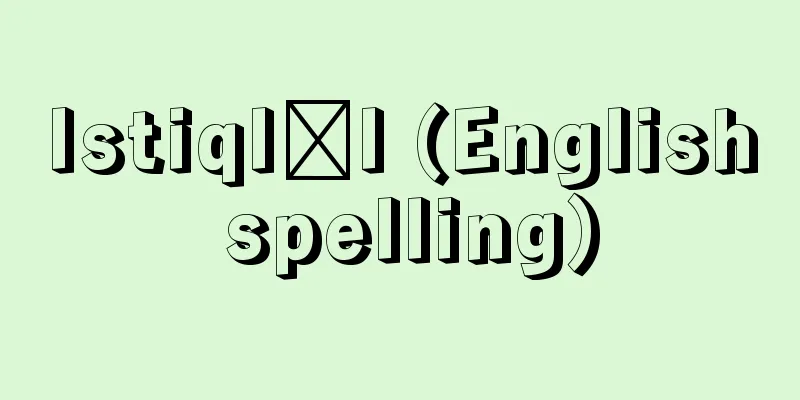Yaeko Nogami

|
Novelist. Born on May 6, 1885 in Usuki-cho, Oita Prefecture, as the eldest daughter of sake brewers Kotegawa Kakusaburo and Masa. Graduated from Meiji Girls' School, Senior High School. Married Nogami Toyoichiro, whom she met as her English tutor. She began writing with the encouragement of Toyoichiro, who was a student of Natsume Soseki. Under Soseki's attentive guidance, she began writing descriptive prose. Her debut work was Enishi (1907). While writing, she translated Greek and Roman mythology The Age of Legends, which she published with a preface by Soseki (1913). Her original children's literature, Aiko Sosho, was published in Ningyo no Nozomi (1914), which depicts her lifelong philosophy that the most important thing for humans to live is wisdom, and is the origin of Nogami's literature. She went beyond the role of a mother and housewife writer expressed in "Atarashiki no Inochi" (1916) with "Kaijinmaru" (1922), which was based on a true story about the issue of cannibalism, and thereafter dramatically broadened her social perspective, publishing a trilogy of works, "Machiko" (1928-30), "Young Son" (1932), and "Labyrinth" (1936-56), depicting the suffering of a young man in the storm of the early Showa era, when Marxism hit intellectuals. These works are of great historical value, but "Labyrinth" in particular is a masterpiece of postwar literature, depicting the most difficult period in the history of the Showa era on a grand scale. Later, when she was approaching the age of 80, she published "Hideyoshi and Rikyu" (1962-63), which is the author's lifetime masterpiece, depicting the conflict between politicians and artists with an emphasis on the artist's inner conflict. Mori (1972-1985), which was aborted just before completion, was written with a vigor that was hard to believe for a work begun at the age of 87. It is set in Meiji Girls' School and is written in a way that arouses cultural historical interest in the early 1890s, making it a fitting final work for this author. At the celebration of his 99th birthday, which was attended by the entire literary world, he was astonished by his continued enthusiasm, but on March 30, 1985, just before his 100th birthday, he passed away. As the above journey shows, he was a rare author who remained true to his ideals and continued to develop until the very end. He also translated and wrote many critical essays, and his field was wide. She received the Yomiuri Literature Prize (1958), the Women's Literature Prize (1964), the Person of Cultural Merit (1965), the Order of Culture (1971), the Asahi Prize (1981), and the Japan Literature Grand Prize (1986). [Sumiko Watanabe] "The Complete Works of Nogami Yaeko," 26 volumes (1980-82, Iwanami Shoten)" ▽ "The Diary of Nogami Yaeko (1984, Iwanami Shoten)" ▽ "Forest" (1985, Shinchosha) ▽ "The Complete Works of Nogami Yaeko, II," 29 volumes (1986-91, Iwanami Shoten)" ▽ "Study of Nogami Yaeko," by Watanabe Sumiko (1969, Yagi Shoten)" ▽ "The World of Nogami Yaeko," by Senuma Shigeki (1984, Iwanami Shoten)" ▽ "Nogami Yaeko and the Taisho Period Intellectuals," by Sukegawa Tokuse (1984, Ohfusha)" ▽ "The Literature of Nogami Yaeko," by Watanabe Sumiko (1984, Ohfusha)" [References] | |Source: Shogakukan Encyclopedia Nipponica About Encyclopedia Nipponica Information | Legend |
|
小説家。明治18年5月6日大分県臼杵(うすき)町に酒造家小手川角三郎・マサの長女として生まれた。明治女学校高等科卒業。英語の家庭教師として知遇を得た野上豊一郎(とよいちろう)と結婚、夏目漱石(そうせき)の門下であった豊一郎の啓発により創作に着手。漱石の懇切な指導のもとに写生文で出発。処女作『縁(えにし)』(1907)。創作のかたわらギリシア・ローマ神話『伝説の時代』を翻訳、漱石の序を付して出版(1913)。書き下ろし児童文学「愛子叢書(そうしょ)」に起用されて出版した『人形の望(のぞみ)』(1914)は、人間が生きるうえでもっともたいせつなのは知恵であるという生涯を貫いた理念が描かれ、野上文学の原点をなす。『新しき命』(1916)が表明する母親・主婦作家の域を、人肉食問題を実話に基づいて創(つく)った『海神丸』(1922)によって超えると、以後、飛躍的に社会的視野を拡大し、マルキシズムが知識人を襲った昭和初年の疾風怒濤(しっぷうどとう)下で苦悩する青年の姿を、『真知子(まちこ)』(1928~30)、『若い息子』(1932)、『迷路』(1936~56)と三部作的構成で発表した。これらは歴史的記念碑としての価値高い作品であるが、とくに『迷路』は、昭和史のなかでももっとも厳しい時節をスケール大きく描いた、戦後文学の代表作である。その後、80歳間近にして発表した『秀吉と利休』(1962~63)は、政治家対芸術家の対立関係を、芸術家の内面葛藤(かっとう)に力点を置いて描いた、作者畢生(ひっせい)の傑作である。完結を目前に中絶した『森』(1972~85)は、87歳時起筆作とは思えぬ精気で、明治女学校を舞台に明治30年代前半期が、文化史的感興をそそる方法で書かれている、この作者の掉尾(とうび)を飾るにふさわしい作品である。文芸界がこぞって白寿を祝った席で、なお盛んな意欲を披瀝(ひれき)して驚嘆されたが、昭和60年3月30日、満100歳の誕生日を前に長い生涯を閉じた。以上の道程が示すように、自己の理念に忠実に、最後まで生々発展し続けた類稀(たぐいまれ)な作家である。翻訳、評論も多く領域は広い。読売文学賞(1958)、女流文学賞(1964)、文化功労者(1965)、文化勲章(1971)、朝日賞(1981)、日本文学大賞(1986)を受けた。 [渡辺澄子] 『『野上彌生子全集』全26冊(1980~82・岩波書店)』▽『『野上彌生子日記』(1984・岩波書店)』▽『『森』(1985・新潮社)』▽『『野上彌生子全集 第Ⅱ期』全29冊(1986~91・岩波書店)』▽『渡辺澄子著『野上弥生子研究』(1969・八木書店)』▽『瀬沼茂樹著『野上彌生子の世界』(1984・岩波書店)』▽『助川徳是著『野上弥生子と大正期教養派』(1984・桜楓社)』▽『渡辺澄子著『野上弥生子の文学』(1984・桜楓社)』 [参照項目] | |出典 小学館 日本大百科全書(ニッポニカ)日本大百科全書(ニッポニカ)について 情報 | 凡例 |
Recommend
Village system - Gosonsei
The Edo period rural system inherited the charact...
available energy
…It is the maximum mechanical work that can be ex...
Heterotypic incompatibility
…This phenomenon is widely found in higher plants...
Grazzini, A. (English spelling) GrazziniA
…Another academy that has lasted a long time is t...
Fujita Otozo
A Nagauta singer. There have been six generations ...
Pueblo Bonito (English spelling)
...The settlements of the III period (1100-1300) ...
Surendranāth Banerji (English spelling)
Indian politician. Born in the Kulin Brahman cast...
Hydrogen peroxide - Hydrogen peroxide
〘 noun 〙 A solution containing hydrogen peroxide. ...
Nurturing Medical Care - Ikuseiiryo
…The national government is usually the payer for...
Phthalocyanine pigment - Phthalocyanine pigment
Phthalocyanine is an organic pigment with a unique...
Gionsha (Fukuoka) - Gionsha
...The magistrate was in charge of the administra...
Bundesrat
...Their official names vary from country to coun...
North - Hokubu
A district in Kita-ku, Kumamoto City, Kumamoto Pr...
Octopus tree - Octopus tree
An evergreen tree of the family Pandanusaceae (AP...
Cat's-ear (English spelling)
...It is especially common in Hokkaido. Its Engli...









